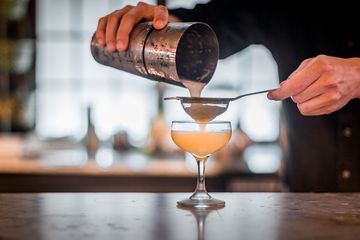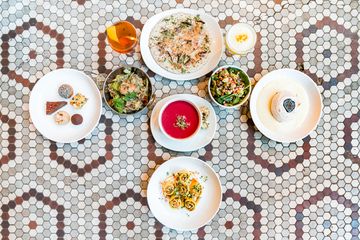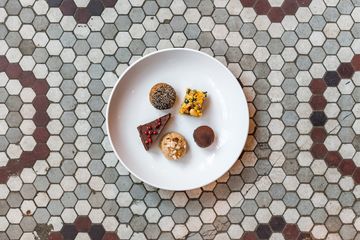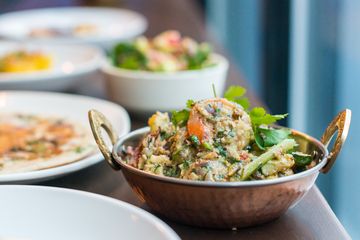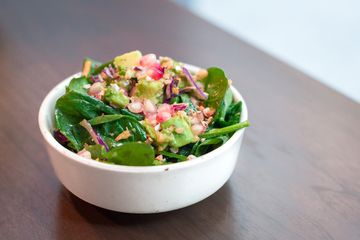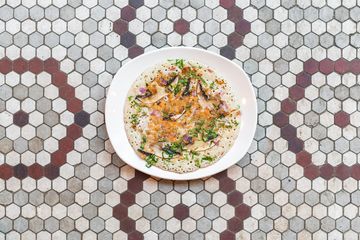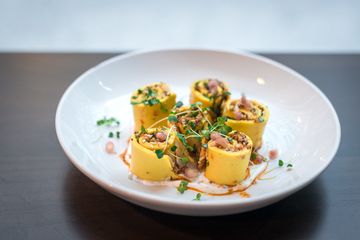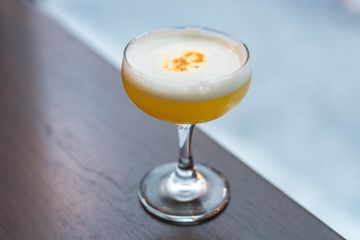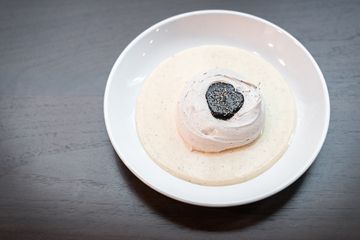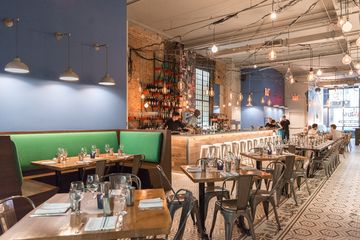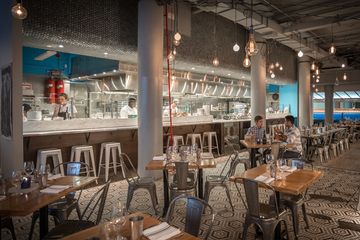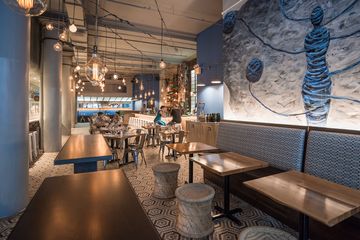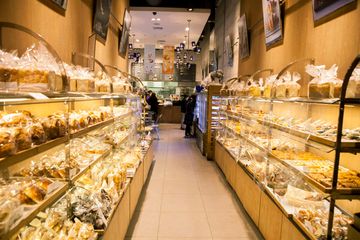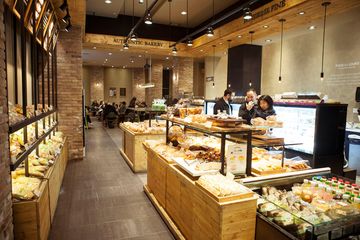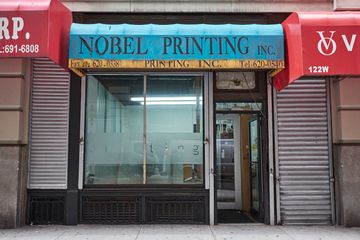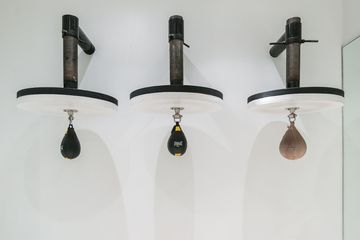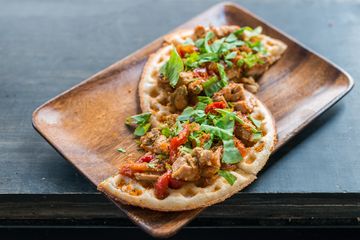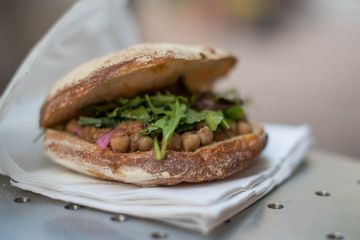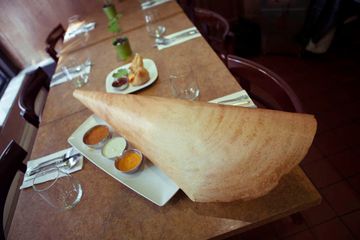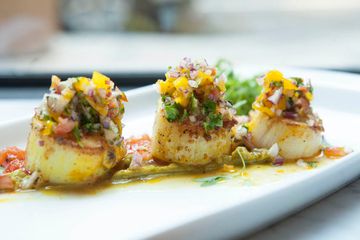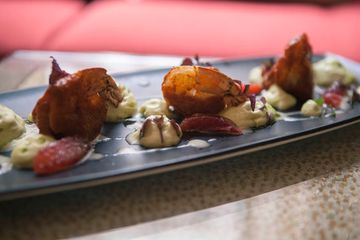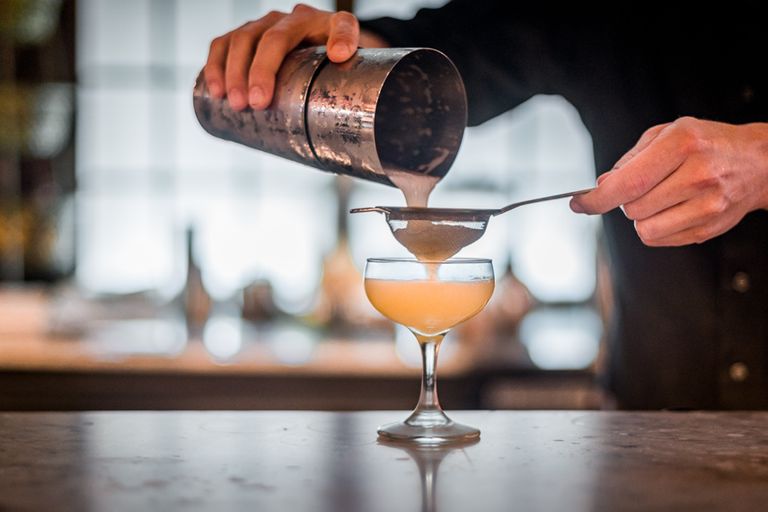
"We put a lot of thought and love into our cocktails," Ajna Jai, the daughter of the owner, Anita Jaisinghani, proudly shared with me when we sat down for our conversation. And what better way to begin a meal than with a Madras (chili-infused tequila, rum, lime, vanilla, mango and mace), a Maid's Mantra (gin, lime, cucumber, sugar, cilantro and chili), or an E 100 Sour (sherry, lemon, ginger syrup, turmeric and egg white).
Having dined here previously, I knew that not only are the drinks amazing, but so too are their unique Indian dishes. I would have dinner at Pondicheri every week, if given the opportunity. With an emphasis on healthy eating and just the right amount of unique spices, the team behind the open kitchen are continuously experimenting with new ideas, as well as utilizing the recipes from Chef Anita's award-winning restaurant in Houston.
I was stunned to find out from Ajna that Pondicheri was the first tenant in the building in over thirty years. "I picked it and I am very proud of my decision," Ajna revealed to me. Ajna went on to tell me that her mother was contemplating opening a new restaurant in another city, but Ajna was already living in Manhattan, so she was able to convince her mom to let her scout out the perfect location. As an abandoned building, the space needed a lot of work; however, Ajna's vision was to keep it as natural as possible - "to allow the skeleton to be as close to home as I could." Ajna said that they worked to clean up the original tile floors, to design the restaurant around the large, striking columns, and to allow the brick walls to be exposed.
When I asked Ajna how she came to run Pondicheri, she responded matter-of-factly, "It fell into my lap, quite honestly." Ajna had grown up in the business. She was born in Canada, but when the family moved to Texas, her mom - who is originally from India - decided to open the high end restaurant, Indika, and shortly after, a more accessible dining spot, Pondicheri. "In Manhattan, we have created a mix of the two," Ajna said.
Ajna moved to New York in 2010 to pursue a career in acting. When her mom was looking to hire a manager for the new restaurant in 2016, it made perfect sense for Ajna to be this person. The agreement, however, is that if she has an audition or a shoot, then someone else will cover for her, allowing her to pursue her other passion. Despite having chosen to work in two of the most challenging professions in the city, there is no doubt in my mind that this young, beautiful woman will be successful in both careers.
I live close by, and so I constantly walked past the building that I knew would soon house Pondicheri. With eager anticipation, during the summer of 2016, I would knock on the door only to learn it would be a few more days. Initially, the beautiful, vast space offered breakfast and lunch served from the counter placed up front. Enticing eggs, pancakes, home-baked muffins and a variety of specialties were on the Indian-focused menu. It was only a short time later that the team added a full service dinner menu with seating throughout their stunning space.
I have now tried the appetizer, Khandvi, several times - it might be my favorite dish. With its pinwheel shape made with chickpeas and interior made from coconut, cashew, sesame and spices, it has been a real crowd pleaser, not only for me, but, according to Ajna, for many others, too. The roasted beet soup, sporting a creamy texture, was splendid. But it was the two round, lightly fried paneer balls that sat on the side of the bowl that were the show stoppers for me. As I watched the kitchen staff tenderly preparing them, I did not realize that they would accompany the soup. The server suggested that I crush the balls into the bowl so as to give it a bit of texture. It was a great concept, however, I simply wanted to savor each little nugget on its own.
The Thalis platters are not only presented beautifully, but they allow diners to have a few nibbles of a variety of different dishes from the kitchen. This can include the beet soup, crispy okra (always at the top of my list), sweet potato peanut samosa and a variety of other intriguing meat and seafood choices. In addition, there are large plates offered that invite people to share either a vegetable platter or one filled with lamb or seafood.
My strong suggestion is to leave room for dessert. There are a number of scrumptious choices, including a rotating Mithai Tasting of Indian sweets, and my dessert of choice, the spiced chocolate meringue with cinnamon, creme anglaise and a Valrhona chocolate sauce on top.
Ajna was eager to convey to me that at Pondicheri, you can eat Indian food on a regular basis. "It does not have to be a destination." She hopes that people will stop by and splurge on their baked goods, and even an Indian version of fries. "If you are going to eat a cookie, eat it from Pondicheri, it is the best quality," she proclaimed.
